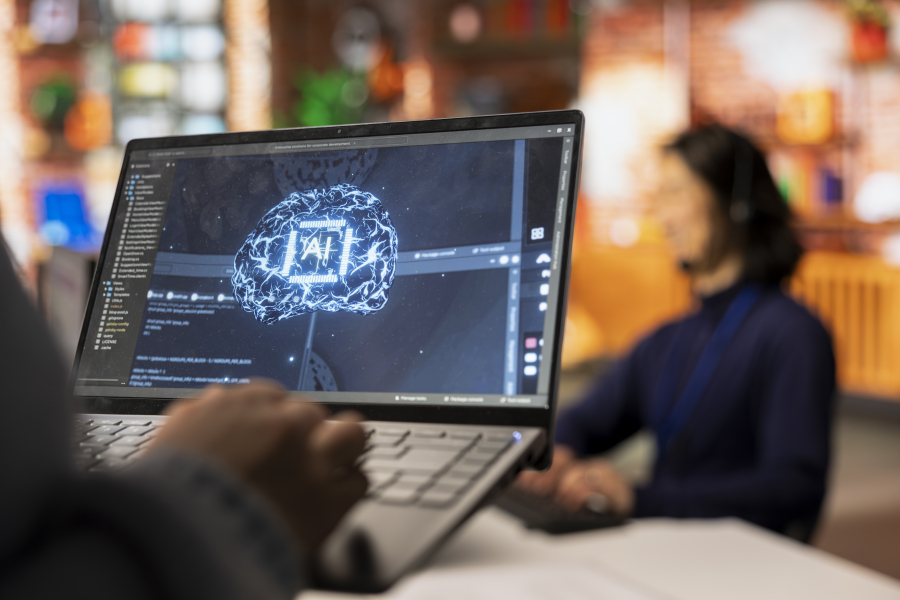Personal Branding for Architects and Media Artists
In today’s digital-first world, having exceptional skills as an architect or media artist is only half the battle. If you want to land high-value clients, stand out in a saturated market, or transition from freelancer to thought leader, you need one powerful asset—a personal brand. Personal branding isn’t just for influencers; it’s a crucial tool for creative professionals who want to showcase their identity, aesthetics, values, and unique perspective. At freelancerbridge, we believe that a well-defined personal brand can be your most valuable client magnet. This guide will show you how to develop, present, and grow a personal brand that attracts the right audience and opportunities.
Long Description: Personal Branding for Architects and Media Artists
Architects and media artists operate in visually driven and concept-heavy industries, where creativity is both a selling point and a personal expression. But talent alone isn’t enough to thrive. Today’s clients and collaborators are more likely to discover you through Instagram, Behance, LinkedIn, or even Google—before they ever meet you.
This means your personal brand is your digital handshake. It tells potential clients:
Who you are
What you believe in
What kind of work you do
Why they should trust you
Whether you're looking to get hired by top firms, pitch to investors, or grow as an independent creator, your personal brand plays a critical role in career growth.
Here’s how to strategically build and elevate your personal brand as an architect or media artist.
1. Understand What Personal Branding Really Means
Personal branding is the intentional representation of your personality, style, and professional identity across all touchpoints. For architects and media artists, this often includes:
Visual presentation (logo, colors, portfolio style)
Tone of voice (minimalist, bold, technical, conceptual)
Online presence (social media, personal website)
Your values and vision (sustainability, community, innovation, etc.)
Consistency across platforms
The goal is to create a brand experience that instantly communicates who you are and what sets your work apart.
2. Define Your Creative Identity
Before building your brand, define the core of it: who are you creatively?
Ask yourself:
What niche do I work in? (e.g., eco-architecture, 3D animation, public installation)
What kind of clients or audiences do I want to attract?
What are the values behind my work?
What adjectives describe my style? (e.g., modern, experimental, emotional, raw)
Clarity here makes every branding decision easier—from your logo to your LinkedIn bio.
3. Develop a Strong Visual Identity
Your visual identity is your first impression. Ensure your design elements reflect your personality and professionalism.
Essentials for your visual brand:
A memorable logo or personal mark
A color palette and typography that match your style
Consistent presentation of projects in your portfolio
Branded templates for social posts, resumes, or presentations
Signature design elements (patterns, icons, layout style)
Tip: If you're a visual creator, your branding should feel as designed as your portfolio.
4. Build a Professional Portfolio Website
Your website is your online studio. It should include:
An eye-catching homepage
A curated selection of your best work (with context, not just visuals)
About page with your story and vision
Contact form or email
Optional blog or case study section
Use your domain name (e.g., yourname.com) and make it mobile-friendly. Platforms like Squarespace, Webflow, or WordPress work great for creative professionals.
5. Optimize Your Bio Across Platforms
Whether on LinkedIn, Instagram, Behance, or YouTube, your bio should clearly state:
What you do
Your niche or specialty
The value you offer
A personal touch (e.g., your inspiration, location, or creative mission)
Example bio for an architect:
“Urban architect blending sustainable design with human-centric experiences. Founder of GreenSpaces Studio. Based in Mumbai, working globally.”
Make it easy for people to understand and remember you.
6. Share the Story Behind Your Work
Clients and collaborators don’t just care about what you make—they want to know why and how.
Storytelling enhances personal branding by:
Adding emotion to your portfolio
Differentiating your process
Building connection with your audience
Use captions, blog posts, videos, or behind-the-scenes reels to explain your process, thinking, and challenges overcome in each project.
7. Leverage Social Media for Exposure and Connection
Social platforms are essential for creative freelancers and artists. Each has a unique role:
Instagram: Best for visual storytelling and regular updates
LinkedIn: Ideal for professional networking, thought leadership
Pinterest: Great for driving portfolio traffic and moodboard sharing
YouTube or Vimeo: For video walkthroughs or project showcases
Twitter/X: For short-form creative updates and industry discussions
Choose 1–2 platforms and maintain consistent posting that reflects your brand tone and style.
8. Network With Intention
Building your personal brand isn't only digital—it also happens in real life and through relationships.
Offline strategies:
Attend design festivals, exhibitions, or architecture summits
Join creative co-working spaces
Collaborate on multi-artist projects
Participate in juried design competitions
Online strategies:
Join niche Slack communities, forums, or Discord groups
Comment on fellow artists’ work
Respond thoughtfully to messages and DMs
Reach out for collaborations that align with your brand
Relationships fuel visibility and credibility.
9. Create Thought Leadership Content
Become a known voice in your niche by creating content that showcases your expertise:
Case studies
Behind-the-scenes processes
Tutorials or breakdowns
Design philosophy essays
Opinions on trends in architecture or media art
You can publish on platforms like Medium, LinkedIn, YouTube, or your own blog. This not only builds authority but drives traffic back to your portfolio.
10. Maintain Consistency in Messaging and Visuals
One of the most important pillars of a strong personal brand is consistency. No matter where someone encounters your work—LinkedIn, your site, Behance—it should look and feel like it came from the same person.
Keep consistent:
Fonts and color use
Project naming and descriptions
Bio tone and content themes
Response time and client experience
Inconsistency leads to confusion. Consistency builds recognition and trust.
11. Ask for Testimonials and Endorsements
Social proof adds credibility to your brand. After each project, ask for:
Written testimonials
LinkedIn recommendations
Tagging or mentions on social platforms
Permission to showcase client logos
Display these on your website or social bios. Let others speak to your professionalism and impact.
12. Evolve Your Brand As You Grow
Personal branding is not static. As your style evolves or you shift into a new niche, update your:
Bio and elevator pitch
Visual branding (subtle tweaks or full rebrands)
Portfolio focus
Content themes
Revisit your brand every 6–12 months to ensure it reflects your current work and goals.
Conclusion
A powerful personal brand is more than a logo or website—it’s how you make people feel, how you present your vision, and how clearly you communicate your value. As an architect or media artist, personal branding gives you the visibility, influence, and credibility needed to grow your creative career on your terms.
At freelancerbridge, we help creatives build businesses that go beyond freelancing gigs. Invest in your personal brand now, and it will continue to open doors for years to come.


 by Emily
by Emily




